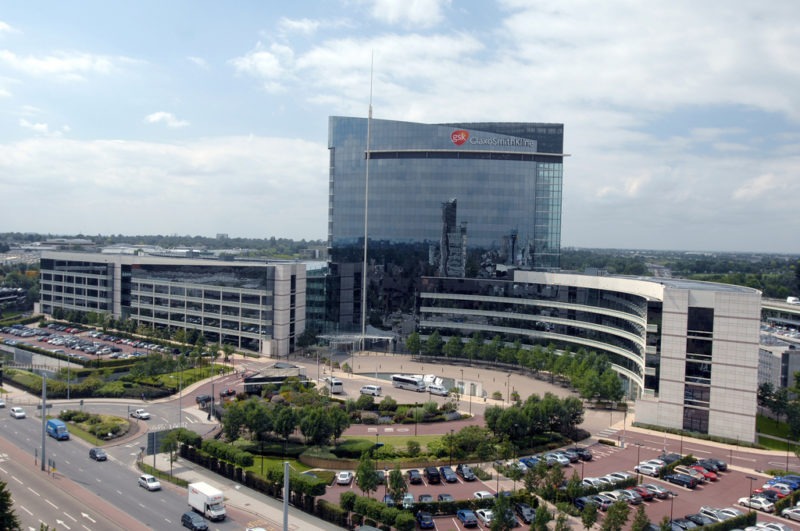GSK’s CEO Highlights Strategic Priorities in Strengthening Pharmaceutical Business
Emma Walmsley, who became CEO of GlaxoSmithKline (GSK) on April 1, highlighted the priorities of the company following its first-half 2017 results. So what may be in store for GSK?
Walmsley took over the helm of GSK after leading the company’s consumer healthcare business. Her predecessor, Andrew Witty, had a measured approach for growth for GSK with a strategy of building a diversified company that included non-drug assets in consumer healthcare and vaccines. Walmsley has emphasized the need for the company to improve results in its pharmaceutical business. So what is her plan?
Inside GSK
To gain a sense of the strategic direction of GSK, it is important to look at the recent history of GSK and its new CEO. Emma Walmsley was appointed chief executive officer of GSK on April 1, 2017 from her role as CEO of GSK Consumer Healthcare, a joint venture between GSK and Novartis. She joined GSK in 2010 with responsibility for Consumer Healthcare, Europe and was subsequently appointed president of GlaxoSmithKline Consumer Healthcare. She has been a member of GSK’s Corporate Executive Team since 2011. Prior to joining GSK, she worked at L’Oreal for 17 years, where she held a variety of marketing and general management roles in Paris, London, and New York.
 |
|
Emma Walmsley |
Walmsley took over the head of GSK’s consumer healthcare business following the formation of a joint venture between GSK and Novartis as part of a three-part deal between the companies in 2015, a major move by GSK. Under that deal, GSK and Novartis created a consumer healthcare joint venture that combined the two companies’ consumer healthcare divisions, Novartis acquired certain oncology products and pipeline compounds from GSK, and GSK acquired Novartis’ non-influenza vaccines business. That deal signified a strategic emphasis for GSK by focusing on higher-volume, lower-margin businesses of consumer healthcare and vaccines and selectively positioning itself in higher-margin, higher-risk pharmaceuticals only for certain therapeutic areas.
In GSK’s first-half results analysis, Walmsley re-affirmed the company’s commitment to its three core areas of pharmaceuticals, consumer healthcare, and vaccines. “The recent performance of these three businesses has demonstrated the benefits of the transaction with Novartis in 2015 as well as the impact of more effective introductions of new products, notably new respiratory and HIV medicines and vaccines to prevent meningitis,” said the company in a statement. “Better performance, together with cost savings has also resulted in improved margins and cash flows for all three businesses over the last 18 months.”
GSK reported first-half 2017 sales of £14.07 billion ($19.42 billion), a 4% increase year over year on a constant exchange rate (CER) basis. In the first half of 2017, pharmaceutical revenues were £8.55 billion ($11.29 billion), up 4% on a CER basis year over year. Consumer healthcare, the company’s second largest segment, tallied sales of £3.89 billion ($5.14 billion) in the first half of 2017, up only 1% on a CER basis. Revenues from its vaccines business were up 10% on a CER basis with 2017 first-half sales of £2.26 billion ($2.98 billion).
“All three businesses need to perform but the priority for GSK is to improve in pharmaceuticals,” said the company in its first-half results. “Delivering full value from recent and imminent product launches, together with cost-base improvements, is required to help mitigate the impact of pricing pressures to its [pharmaceuticals] current portfolio. Strengthening the pharmaceuticals pipeline is a key objective for the Group.”
The plan for GSK’s pharmaceutical business
In its pharmaceuticals pipeline, GSK said it has developed a priority list of assets and has set a target to deploy 80% of its pharmaceuticals R&D capital to priority assets in two current therapy areas (respiratory and HIV/infectious diseases) and two potential areas (oncology and immuno-inflammation). The company expects significant clinical data from these priority assets over the next three years, which will be used to inform R&D investment decisions and how best to generate value from these assets. GSK says it also expects to pursue “disciplined business development” to augment its early-stage pipeline in these priority areas.
As part of its efforts to prioritize and allocate resources in R&D, GSK is terminating development programs that are unlikely to generate sufficient returns. GSK has so far made decisions to terminate, partner, or divest more than 30 preclinical and clinical programs. It has also undertaken a strategic review of its rare diseases unit and is now considering options for future ownership of these assets. In addition, the company is taking steps to improve the partnership between R&D and its commercial organization as well as its governance around pipeline decision-making with the establishment of a new Development Advisory Board and a new Board Scientific Committee.
Two specific moves announced by the company in its first-half 2017 results are to terminate its collaboration on sirukumab, a drug candidate for treating rheumatoid arthritis (RA) with Johnson & Johnson’s Janssen Biologics and to progressively withdraw its support for Tanzeum (albiglutide), a drug to treat Type II diabetes.
In December 2011, GSK and Janssen entered into a licensing and co-development agreement for sirukumab. Under the terms, GSK had exclusive rights to commercialize sirukumab in North, Central and South America while Janssen retained commercialization rights in the rest of the world, including Europe. Global profit was to be shared equally between the two companies. Prior to the agreement, Janssen had been developing sirukumab for RA. The drug was submitted for regulatory review in the US and European Union in 2016. Tanzeum was approved in the US in 2014 for treating Type II diabetes. Eperzan/Tanzeum posted only 2016 sales of £121 million ($160 million).
Further cost savings targeted
GSK also said it is making a number of choices to prioritize its strongest assets and markets in its portfolio and move capital and resources away from those that offer more limited opportunities. To that end, it is prioritizing investment to support commercial execution in the US market and is implementing a new operating model for emerging markets to increase competitiveness and support long-term profitable growth in these markets.
The company is putting in place plans to improve its cash generation and is expanding its current cost-saving program. It is targeting delivery of an additional £1 billion ($1.32 billion) in annual cost savings by 2020 at CER. The company said that these new cost savings will be used to fund new product launches and R&D investments and help mitigate pricing pressure on margins. A key driver of the new savings will be through realizing efficiency improvements in the company’s supply chain. While not specifying details, this will include changes to GSK’s manufacturing network, divestment and exit of more than 130 non-core brands (£0.5 billion [$0.66 billion]) in annual sales, reductions in overheads, improved procurement savings, and more strategic supplier relationships.
The company is also seeking to strengthen its capabilities through investments in people and appointment of external talent. One of the key areas for this will be in digital, data, and analytics with a goal to use technology to improve clinical outcomes, develop real-world data, and make a step-change in its customer and consumer engagement. As a first move in this area, the company formed a new executive position, chief digital and technology officer, and named Karenann Terrell, former chief information officer at Walmart, to the position, effective September 4, 2017. She will be responsible for developing GSK’s digital, data, and analytics strategy.
In terms of capital allocation, the company said its free cash flow will be used to invest in the business and support its pharmaceuticals pipeline; realize the consumer healthcare put option, if exercised (refers to the right of Novartis to exercise an option to withdraw from the companies’ consumer healthcare joint venture); and expansion of capacity in the company’s vaccines business. Free cash flow will be used to deliver returns to shareholders through the payment of dividend and “disciplined” business development.
Will new product sales deliver?
Key for Walmsley going forward is increasing new product sales as GSK faces generic competition for its top-selling product. In 2016, GSK posted revenues of £27.9 billion ($36.8 billion), up 6% at CER. Pharmaceuticals represented the largest piece of the company’s revenues in 2016, accounting for 58% of total revenues or £16.1 billion ($21.3 billion), up 3% year over year at CER. Consumer healthcare was the second largest piece at 26% or £7.2 billion ($9.5 billion), which was up 9% at CER. Vaccines represented 16% of 2016 revenues or £4.6 billion ($6.1 billion) in 2016, up 14% at CER.
In 2016, sales of new pharmaceuticals and vaccine products more than doubled to £4.5 billion ($5.9 billion) and accounted for 24% of sales in 2016. HIV products, Tivicay (dolutegravir) and Triumeq (abacavir, dolutegravir, and lamivudine), were the standout products with sales of £2.7 billion ($3.6 billion) while new respiratory products, Relvar/Breo (fluticasone furoate/vilanterol), Anoro (umeclidinium and vilantero), Incruse (umeclidinium), Arnuity (fluticasone furoate inhalation powder), and Nucala (mepolizuma) also grew strongly as did the company’s meningitis vaccines, Bexsero and Menveo. GSK expects sales of new pharmaceutical and vaccine products to reach £6 billion ($7.9 billion) of revenues per annum on a CER basis in 2018. In the first half of 2017, sales of new pharmaceutical and vaccine products were £3.12 billion ($4.12 billion), up 49% CER year over year.
These new product sales are important for GSK, particularly in respiratory products, its largest product franchise with 2016 sales of £6.5 billion ($8.6 billion), but where it faces generic competition for its top-selling product, Seretide/Advair (fluticasone/salmeterol). Global Seretide/Advair sales were £3.49 billion ($4.61 billion) in 2016, down 15% at CER year over year due to generic-drug incursion. In the first half of 2017, respiratory product sales were £3.48 billion ($4.60 billion), a 4% gain year over year, but sales of Seretide/Advair declined further in 2017. Seretide/Advair sales declined 13% CER to £1.60 billion ($2.11 billion) in the first half of 2017. On the plus side, new respiratory products recorded combined sales of £864 million ($1.14 billion) in the first six months of 2017. The company expects that by 2020, nine products will account for approximately 90% of respiratory sales, compared to four in 2015.
GSK’s second largest product franchise is in HIV drugs, which had first-half 2017 sales of £2.10 billion ($2.78 billion), an 18% increase year over year on a CER basis. Sales of established products in the first half were £2.78 billion, a 6% decline year over year on a CER basis. Sales of immuno-inflammation drugs in the first half of 2017 tallied only £185 million ($244 million).






